Dive Details
Location
Date
Sunday 12 August 2018
Time
8:12am - 9:43am
Details
The first dive of a double dive at The Monument and I planned to do The Steps next. I was going to try for either side of high tide and see if the visibility would be improved. The visibility with other options on Thursday and Friday was not all that good.
I parked at The Steps and walked along the shore to the protected area two thirds of the way to The Monument. The tide was quite high so I didn't have to wade very far out before donning my fins. I swam on the surface out to the drop off before descending. I descended below the huge school of salmon (see video below). The visibility was 5 to 10 metres and it looked great. I shot some video of the salmon and just after I turned the GoPro off a female grey nurse shark swam up. It looked a bit smaller than Betty.
I hung around the area for some time and Betty swam by plus the smaller shark. Up until now I have only seen Betty or one of the other sharks once on a dive but these sharks were swimming around under the salmon and made multiple passes. At one point while watching Betty swim by, a blue groper swam over my shoulder and gave me a fright - I'm normally quite calm while diving. See if you can spot the point on the video below. I eventually made my way to Block Rock and the nearby sponge covered rocks and was treated by another pass by Betty.
I continued on with my dive, mindful that the sharks were still around. I swam along the wall and approached the rock where "Ginger", the female pot-bellied seahorse, had been. I checked the orange finger sponge at the start of the rock and found the dwarf lionfish that has been there for months. I then looked for "Ginger" but was not able to find her after much searching. I found the tiny dwarf lionfish in another orange finger sponge at the start of the next rock.
I dropped down to the sand to look for the juvenile weedy seadragon. I searched in the weeds and finally found it. While I was taking photographs of the weedy another shark swam by on the sand towards the Bay. I don't think it was Betty as it looked smaller.
I swam up over the wall to the rock where the new pygmies have been. I looked for the male on top of the rock, which was still covered with snot algae, but couldn't see it. I checked for the female (IL2018072702) on the other side of the rock and found her there. She was difficult to photograph because of the algae. I looked on top of the rock again and this time I found the male (IL2018072701) in the algae.
I headed past Slope Rock and on towards the slope below Seahorse Rock. The visibility had dropped significantly and it was only around 3 metres. I looked for the female White's seahorse and initially couldn't find her. It was difficult to search because everything was covered with snot algae. I eventually found her on one of the orange finger sponges.
I swam along the reef past Split Rock and up to the rocks with the gap where the large grey red-fingered anglerfish has been. It was still in the gap but somewhat covered in snot algae.
The current was getting picking up and I had to work hard against it. I followed the wall down to the sand and looked for the Volva volva cowries (I'd just found out there are two of them). I wasn't able to find them.
I headed straight up the wall and over on to the sand flat and then swam towards the corner of the East-West Wall. I looked for the newer orange anglerfish on the way. I'm sure I found the right rock but it wasn't there. The current was quite strong now and it and the snot algae made searching difficult.
By the time I got to the large rock where the large orange red-fingered anglerfish had been the current was really howling. I looked for the bright orange red-fingered anglerfish but couldn't see it. I then went to where I'd last seen the large orange red-fingered anglerfish and it wasn't there. I checked farther east along the rock to where it had been originally and found the bright orange anglerfish instead. It was covered in snot algae. I did another circuit of the rock but still couldn't find the large orange anglerfish.
I headed west along the East-West Wall to the pygmy pipehorses. On a rock just before the pygmies I spotted the large orange anglerfish.
I looked for the pygmies where I had last seen them. The strong current made it difficult as did all the snot algae. I spotted the gold and white female (IL2018053101) and then one of the males (IL2018071402) but it was just too difficult fighting against the current.
I rode the current past the large orange anglerfish and large rock on the corner of the East-West Wall and then headed south east over the sand flat. I drifted along the top of the wall and dropped down near the large grey red-fingered anglerfish.
I drifted/swam with the current along the reef past Split Rock and along the top of the deep wall. I was travelling along at around 10 metres quite quickly with the current. The visibility had improved to around 5 metres. I wondered if I'd bump into one of the grey nurse sharks and I did almost quite literally. She was swimming in my direction and got a start and quickly turned and swam away.
As I approached the kelp I ascended to 5 metres and started my safety stop as I swam to Split Rock (the other one). I finished my safety stop at Split Rock and then swam underwater to the exit. The tide was still quite high so it was easy to get out. There were two other divers who had just got out ahead of me.
Seas
Strong current and some surge
Visibility
2 to 10 metres
Duration
90 minutes
Maximum depth
13.4 m
Average depth
10.0 m
Water temperature
14°C
Dive Profile from Garmin Descent Mk1
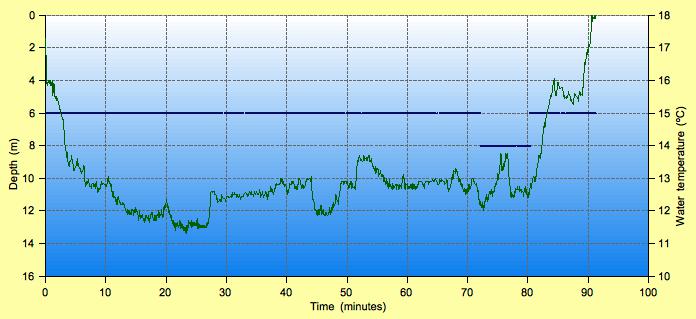
Tides at Botany Bay AEST
Note that tides at dive site may vary from above location.
Low
2:53am
0.10m
High
8:54am
1.53m
Low
2:40pm
0.29m
High
9:06pm
2.05m
Video
Camera gear
Camera
Nikon D500
Lens
Nikon AF-S Micro Nikkor 60mm f/2.8G ED
Housing
Ikelite 6812.5
Lens port
Ikelite Flat Port 5502.41
Strobe
2 x Ikelite SubStrobe DS161
Photographs
Depth information, where present, indicates the depth of the camera when the photograph was taken and can be used to approximate the depth of the subject.
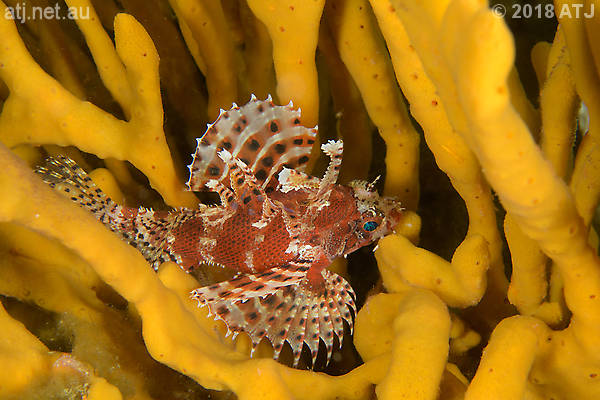
Dwarf lionfish, Dendrochirus brachypterus. 12.1 m.
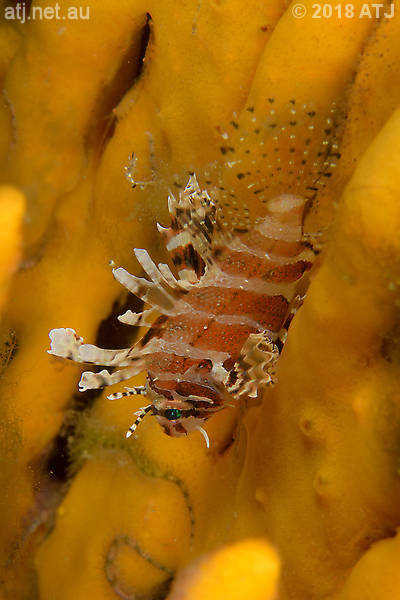
Juvenile dwarf lionfish, Dendrochirus brachypterus. 12.2 m.
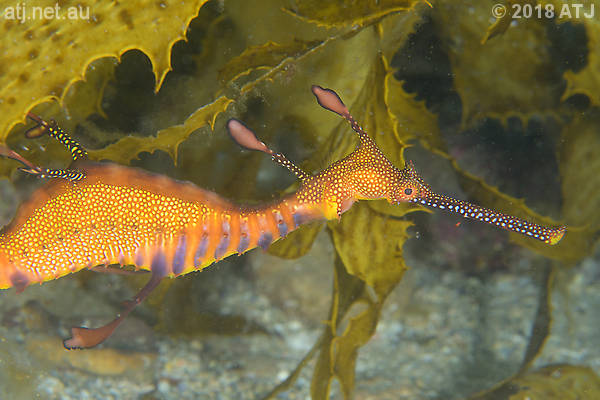
Juvenile weedy seadragon, Phyllopteryx taeniolatus. 13 m.
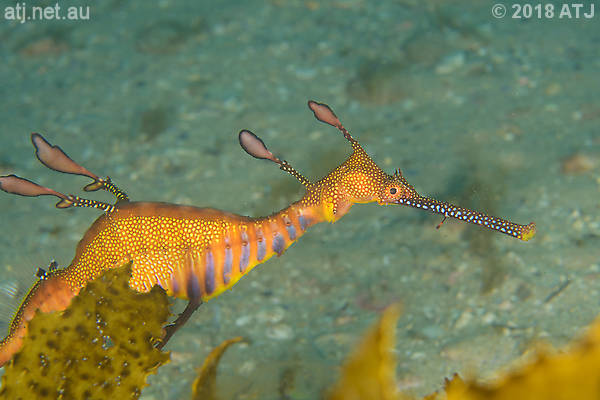
Juvenile weedy seadragon, Phyllopteryx taeniolatus. 13 m.
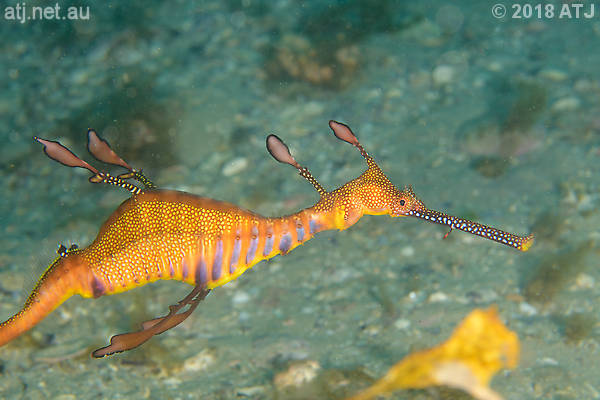
Juvenile weedy seadragon, Phyllopteryx taeniolatus. 13 m.
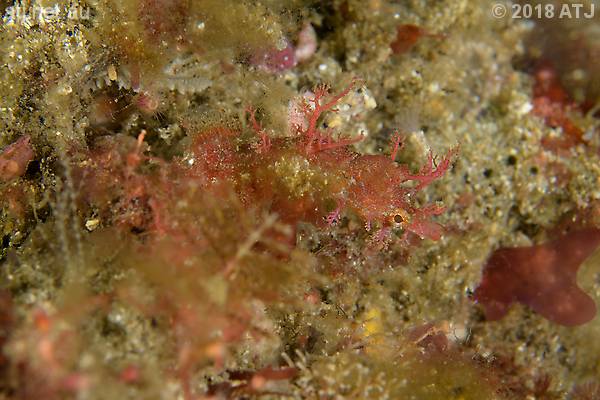
Female Sydney pygmy pipehorse, Idiotropiscis lumnitzeri, (IL2018072702). 11.1 m.
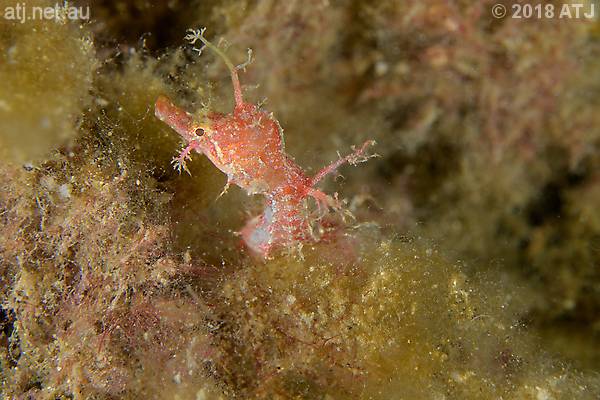
Male Sydney pygmy pipehorse, Idiotropiscis lumnitzeri, (IL2018072701). 10.9 m.
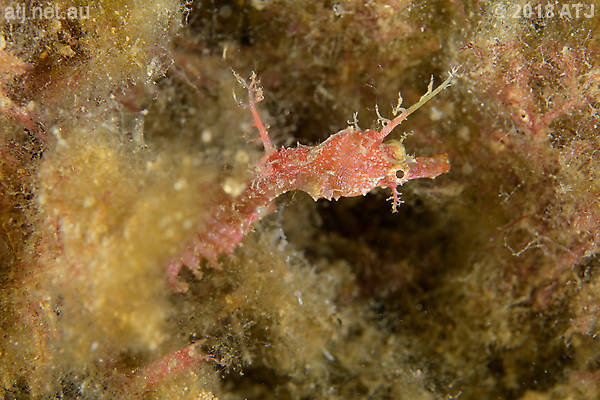
Male Sydney pygmy pipehorse, Idiotropiscis lumnitzeri, (IL2018072701). 11 m.
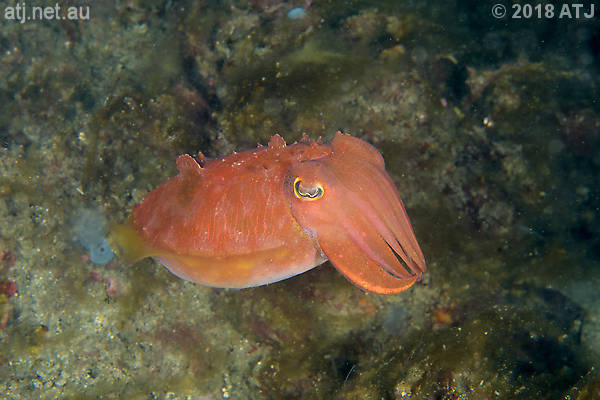
Reaper cuttlefish, Sepia mestus. 10.1 m.

Female White's seahorse, Hippocampus whitei. 10.1 m.
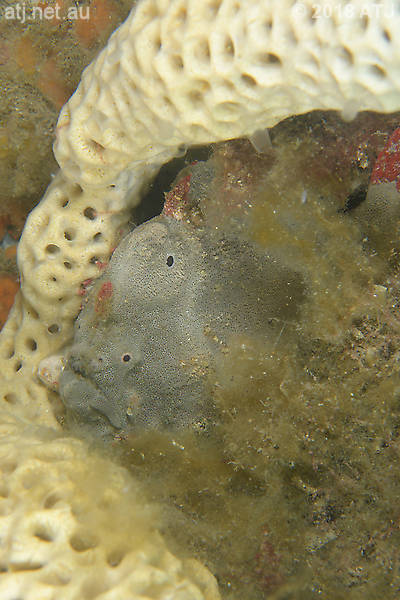
Red-fingered anglerfish, Porophryne erythrodactylus. 10.2 m.
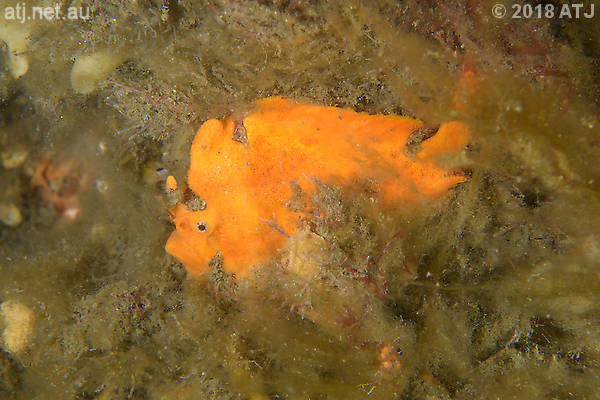
Red-fingered anglerfish, Porophryne erythrodactylus. 10.4 m.
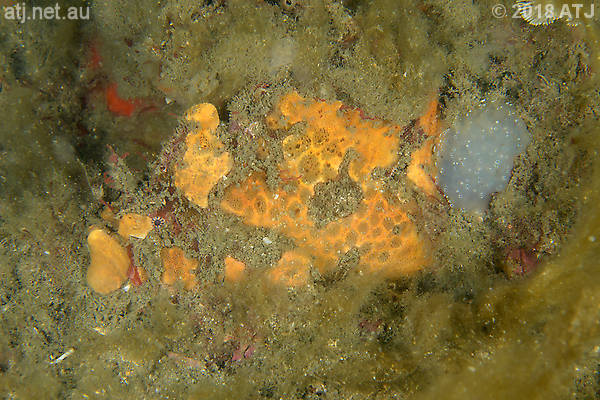
Red-fingered anglerfish, Porophryne erythrodactylus. 10.6 m.
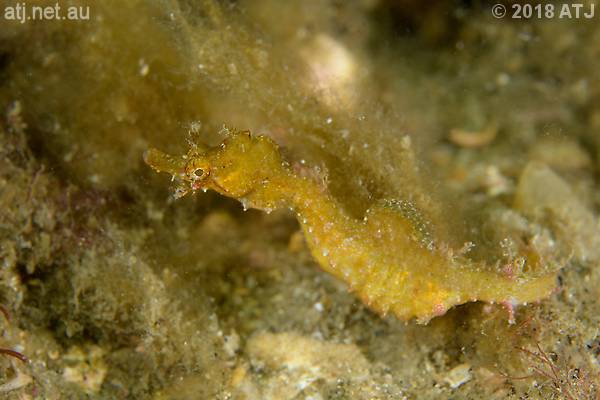
Male Sydney pygmy pipehorse, Idiotropiscis lumnitzeri, (IL2018071402). 10.2 m.
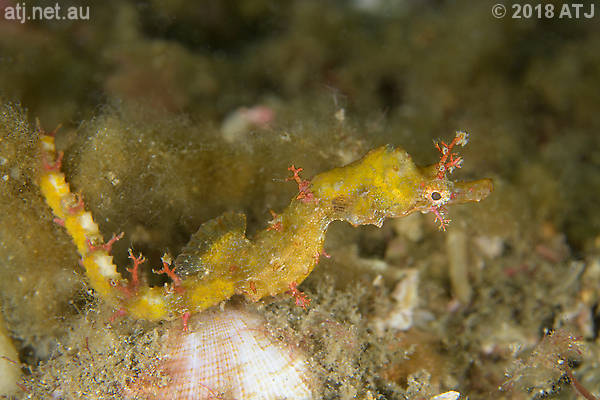
Female Sydney pygmy pipehorse, Idiotropiscis lumnitzeri, (IL2018053101). 10.2 m.